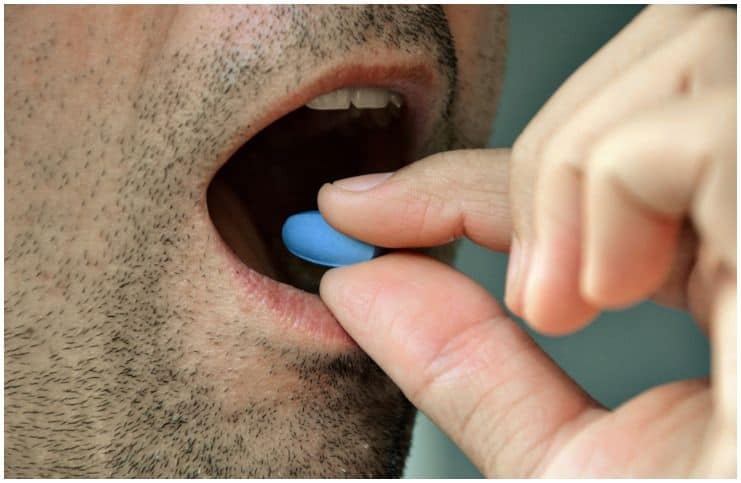What is the 44 532 Blue Pill?
Introduction
This round, light blue pill with the number 44 532 contains 400 mg of Guaifenesin, an expectorant medication.
It was first synthesized in 1940 from a tree bark extract called guaiacum. However, this medication was used for its expectorant qualities in the Caribbean region for centuries. In the present day, it is produced by Major Pharmaceuticals Inc.
Furthermore, it is found under the brand name of Mucinex, an over-the-counter medication used for relieving chest congestion. Other common brand names for guaifenesin include – Resyl, Benylin-E, Balminil Expectorant, Allfen, Antitussin, or Robitussin.
Also, the medication is found in numerous other OTC congestion remedies and is commonly combined with pseudoephedrine, dextromethorphan, or acetaminophen.
Uses
It is typically used as an expectorant in the symptomatic management of coughs linked with bronchitis, the common cold, pharyngitis (inflammation of the pharynx), laryngitis, influenza, pertussis (a highly contagious bacterial disease), measles, and coughs.
Notes – for best results, drink plenty of fluids while using it. Although it may help relieve the symptoms of chest congestion in some individuals, it does not treat the underlying illness.
According to the Journal of the American Board of Family Medicine, guaifenesin may have benefits for women with fertility problems as a result of a cervical failure (a condition of pregnancy that occurs when the cervix begins to dilate and thin before the pregnancy has reached term).
According to research done by Dr. Paul St. Armand, this medication is a possible cure for fibromyalgia (a disorder characterized by widespread musculoskeletal pain). However, it is currently not approved by US FDA to treat fibromyalgia.
Mechanism of Action
It works by thinning the mucus, making it easier to get the congestion out of the throat, lungs, and nose.
Dosage
The usual recommended dose for children is 100 to 200mg every 4 hours. The usual recommended dose for adults is 200 to 400mg every 4 hours. Do not take more than the amount recommended by your doctor or the instruction on the packaging of the medicine.
Do not give the medication to a child younger than 6 years old. Ask your healthcare provider for more details about using this product safely.
Side Effects of 44 532 Blue Pill
Common side effects may include:
- feeling restless or excited;
- headaches;
- sleep problems (insomnia);
- mild dizziness;
- itching;
- stomach upset;
- skin rash;
- tingly feeling under the skin;
- mild loss of appetite;
- vomiting;
- mild nausea.
Rare side effects may include:
- nervousness;
- uneven heartbeat;
- anxiety;
- pounding heartbeat;
- severe headaches;
- severe dizziness;
- seizure;
- numbness;
- chest pain;
- trouble concentrating;
- body aches;
- fever (high temperature);
- unusual weakness;
- easy bruising.
To be sure that this medication is safe for you, tell your healthcare provider:
- if you have kidney disease;
- if you have an inherited condition known as phenylketonuria;
- if you smoke tobacco or are regularly exposed to second-hand smoking;
- if you are on a low magnesium diet;
- if have ever had breathing problems, like – emphysema, asthma, or chronic bronchitis;
- about all the non-prescription and prescription medications you are taking;
- if you are allergic to any type of medication.
Pregnancy & Breastfeeding
The use of this medication is considered unsafe while being pregnant, especially during the initial stages of pregnancy. In addition, because there are no well-done clinical studies regarding the safe use of this medication by nursing women, it is best to avoid it if you are breastfeeding an infant.
Alcohol
It can cause side effects that may impair your reactions or thinking. Additionally, when combined with alcohol, the risk of these side effects increases substantially.
Drug Interactions
This medication may negatively interact with other drugs, especially:
- acetaminophen;
- phenylephrine;
- Benadryl (diphenhydramine);
- Advil (ibuprofen);
- carbamazepine;
- aspirin;
- Imodium (loperamide);
- benztropine;
- levothyroxine;
- calcium carbonate;
- Nexium (esomeprazole);
- docusate;
- simvastatin;
- guaifenesin;
- omeprazole;
- ibuprofen;
- Tussin DM ;
- lisinopril;
- Tylenol (acetaminophen);
- Tums Regular Strength (calcium carbonate);
- metformin;
- loratadine.
Addiction
Guaifenesin by itself is not addicting, but it can be combined with other medications, such as dextromethorphan, a medication that is safe for ingestion and not habit-forming when taken as prescribed by a doctor, but excessive use of dextromethorphan may lead to addiction and withdrawal symptoms when quitting its use abruptly.
Image credit – Shutterstock
READ THIS NEXT: Meloxicam vs Aleve
References https://www.ncbi.nlm.nih.gov/pmc/articles/PMC3546880/ https://www.ncbi.nlm.nih.gov/pmc/articles/PMC5724298/
